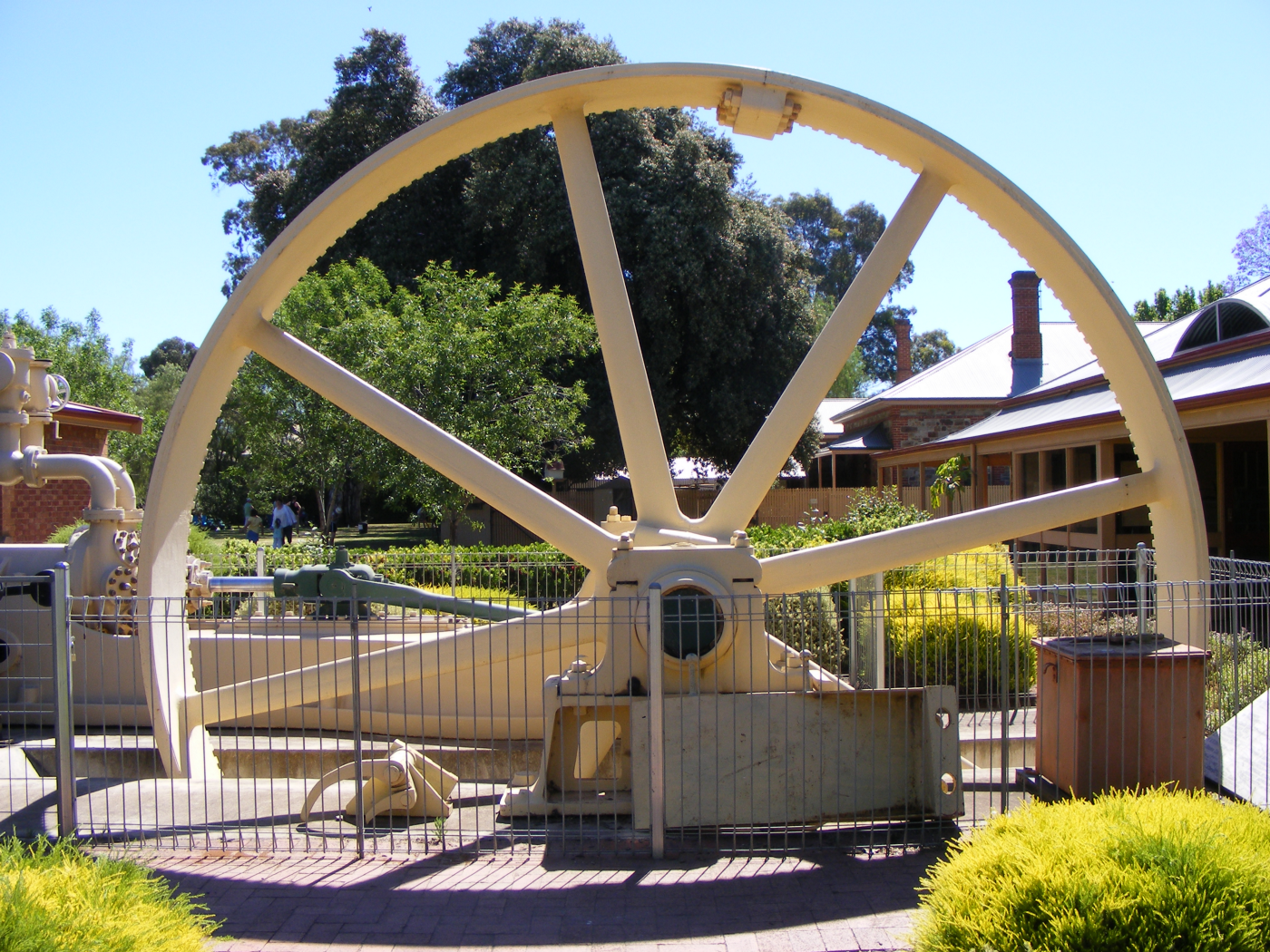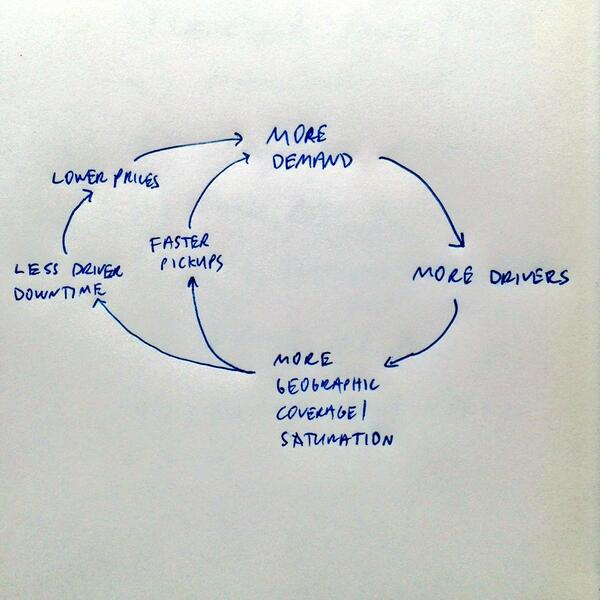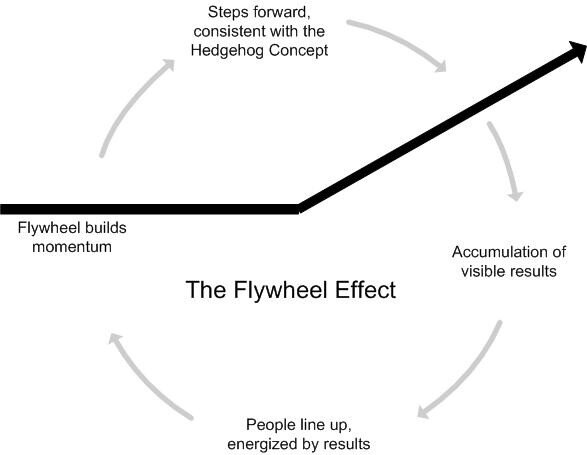Flywheel Effect: Why Positive Feedback Loops are a Meta-Competitive Advantage
Note: Republishing this post I shared on the Medium paid subscription a few years ago. This was originally written in August 2017.
I admit, I was not completely sure what I was talking about when I chose “Flywheel Effects” as a topic. But that’s part of the fun.
This turned into a fascinating adventure through Competitive Advantages, Mental Models, and practical lessons for operators. Also lots of fun pictures and diagrams in this one!
Here’s the “Table of Contents”:
What is the Flywheel Effect?
Applications of Flywheel Effect (and Meta-Competitive Advantages)
The Best Examples of Flywheels
How to Push the Flywheel
I think we ended up in a good place, but as always I’d love to hear if you think I’m wrong on any of this so I don’t stay quite as ignorant as I am now.
What is the Flywheel Effect?
Definition…?
There doesn’t seem to be a generally agreed-upon definition of the Flywheel Effect. It was used because it was a metaphor to help readers visualize momentum.
Visualization
Jim Collins originally used the Flywheel as a metaphor in Good To Great:
Picture a huge, heavy flywheel — a massive metal disk mounted horizontally on an axle, about 30 feet in diameter, 2 feet thick, and weighing about 5,000 pounds. Now imagine your task is to get the flywheel rotating on the axle as fast and long as possible.
Pushing with great effort, you get the flywheel to inch forward, moving almost imperceptibly at first. You keep pushing and, after two or three hours of persistent effort, you get the flywheel to complete one entire turn.
Dissection
The Flywheel Effect is used to describe a handful of concepts at once, which are rarely split apart. Here is each component piece I could identify, and how it relates to the Flywheel illustration.
Momentum — An object at rest tends to stay at rest, and object in motion tends to continue in motion. Newton’s first law, applied to business. Flywheels (being massive heavy objects) are hard to get moving. If they get moving, they are likely to continue.
Feedback Loops — The faster the wheel is spinning, the easier it is to add incremental speed. The faster it moves, the more energy it generates. And the more excited everyone is about how great this Flywheel is!
Compounding Return on Effort —No “one push” makes it happen. Continuous small inputs add up into an impressive output, eventually.
Direction — Sustained effort must be focused in one direction in order to maintain momentum and compounding returns. Misplaced effort is either wasted or counterproductive.
You can see each of these concepts in this one paragraph from Good To Great explaining the effect:
“The momentum of the thing kicks in your favor, hurling the flywheel forward, turn after turn … whoosh! … its own heavy weight working for you. You’re pushing no harder than during the first rotation, but the flywheel goes faster and faster. Each turn of the flywheel builds upon work done earlier, compounding your investment of effort. A thousand times faster, then ten thousand, then a hundred thousand. The huge heavy disk flies forward, with almost unstoppable momentum.”
Definition, again
Though really this whole post is an attempt to define and understand The Flywheel Effect, it seems like a let-down without a one-sentence explanation. So with all that said… here’s my shot at a definition.
Flywheel Effect: Positive feedback loops that build momentum, increasing the payoff of incremental effort.
Or, Flywheel Effect in Normal English: When good things you do lead to more good things “just happening”.
Applications of The Flywheel Effect
In resources mentioning the Flywheel Effect, it is often conflated with ideas that co-occur, but are distinct concepts. It seems like an easy mistake to make.
My current thinking is The Flywheel Effect, as we’ve defined it, is a kind of meta-competitive advantage.
It can accelerate the growth of a business and the widening of a moat, but it is not itself a source of competitive advantage. It is a force-multiplier of existing competitive advantages.
Let’s see how the Flywheel Effect interacts with Competitive Advantages:
Supply-Side Economies of Scale
The most basic and old-school competitive advantage — the bigger you get, the cheaper you can produce things and the more available your product is. Think Wal-Mart and Carnegie Steel.
The bigger these companies got, the cheaper they could sell their goods for, the more leverage over suppliers, and the bigger the brand became.
Another example, from Ben Gilbert’s talk (more later) is Disney. As their empire of entertainment grew, the positive feedback loops between their various businesses became stronger:
Brand
Another basic Flywheel Effect exists for Brand. To use an oddball example to isolate the effect better — think of College Basketball programs recruiting players.
Every time they have a player drafted or win a championship, it becomes a more desirable school for the next round of players, and on it goes. Each win makes the next win slightly easier.
Another example, Munger’s explanation of the powers of scale for Coca-cola.
Another advantage of scale comes from psychology. The psychologists use the term social proof. We are all influenced — subconsciously and to some extent consciously — by what we see others do and approve. Therefore, if everybody’s buying something, we think it’s better. We don’t like to be the one guy who’s out of step.
The social proof phenomenon which comes right out of psychology gives huge advantages to scale — for example, with very wide distribution, which of course is hard to get. One advantage of Coca-Cola is that it’s available almost everywhere in the world.
Network Effects (Demand-side Economies of Scale)
Network Effects and Flywheel Effect are very commonly conflated, because they so commonly occur together.
Network effects almost always lead to or create a Flywheel Effect, but the Flywheel Effect can occur where network effects do not, as we’ve seen in the previous examples.
Network Effects are the most powerful source of the Flywheel Effect.
This is because Network Effects (past a certain tipping point, especially when combined with virality), can be auto-catalytic.
Auto-catalysis — A “runaway feedback loop” describes a situation in which the output of a reaction becomes its own catalyst. (Thanks Farnam Street)
The compounding return on effort is massive, and accelerates as it grows. These combined factors are maybe best exemplified in Facebook, and explain more about how insanely fast it became globally-dominant.
This takes the Flywheel Effect to a whole new level. It becomes like a magical physics-defying Flywheel that uses it’s own momentum to speed itself up even faster without additional input. “Flywheel” so inadequately describes a run-away Network Effect that we really need a whole new way to explain it. (And Magic Flywheel probably won’t stick.)
Examples of the Flywheel Effect
Amazon
Obviously. With their long-term perspective and fanatical focus on price, selection, and convenience, it shouldn’t be a surprise to see Amazon has been pushing the Flywheel.
I stole this screenshot from Ben Gilbert’s talk about Network Effects, which I highly recommend. He highlights these complex overlapping Flywheel effects very well. He also has a great example from Airbnb:
(Which will make much more sense if you hear his voice-over.)
Uber
This great post by Andrew Chen, contributed by Itamar Goldminz, gives an overview of the Positive Feedback Loops in Uber’s business, and how their business model is driving their growth.
If this napkin drawing isn’t self-explanatory, Bill Gurley’s post about Uber’s Valuation (mainly assessing Total Addressable Market and Market Share limit) is a very thorough look at each of these effects.
Pick-up times. As Uber expands in a market, and as demand and supply both grow, pickup times fall. Residents of San Francisco have seen this play out over many years. Shorter pickup times mean more reliability and more potential use cases. The more people that use Uber, the shorter the pick up times in each region.
Coverage Density. As Uber grows in a city, the outer geographic range of supplier liquidity increases and increases. Once again, Uber started in San Francisco proper. Today there is coverage from South San Jose all the way up to Napa. The more people that use Uber, the greater the coverage.
Utilization. As Uber grows in any given city, utilization increases. Basically, the time that a driver has a paying ride per hour is constantly rising. This is simply a math problem — more demand and more supply make the economical traveling-salesman type problem easier to solve. Uber then uses the increased utilization to lower rates — which results in lower prices which once again leads to more use cases. The more people that use Uber, the lower the overall price will be for the consumer.
(Homework Option)
If you want to work this idea out a bit, pick a company not already an example here and draw one of these swoopy charts that tracks their positive feedback loops and see where they are building momentum and growing their moats. Level 1: Coke or WalMart.
Atlassian
One more unique example is Atlassian, and thanks to Khanh Tuong for sending me these links, because this was definitely a new one to me.
Atlassian has been quietly dominating…
And Tom Tunguz has written a great short post about how they’re doing it. He calls it The Flywheel Saas Company.
The Flywheel Model differs from the Traditional Model in one fundamental regard. The enterprise sales team is exclusively inbound. They are explicitly denied the option of seeking business outside the customer base, and must gin up business from only existing customers. The enterprise sales team is an up-sell and cross-sell team. In fact, so is the mid-market sales team. Only the SMB marketing team is permitted to acquire new leads.
The company famously touts that it has grown without sales reps, precisely because its mid-market and enterprise teams farm exclusively within the pool created by the company’s marketing engine.
Flywheel models have a simple beauty about them. The entire company is focused on the same thing: building the momentum in one main customer acquisition mechanism.
I like this example because it doesn’t rely on Network Effects or Economies of Scale. This was a bootstrapped company with fantastic growth because they ignored conventional wisdom and found a way to focus more effort on one specific goal of the business.
How to Push the Flywheel
Pick the right direction as early as possible
Changes in direction (except small corrections) reset the Flywheel. The earlier you can get moving in the right direction, the sooner the efforts will compound and the momentum will build.
Focus Efforts
Find the things really moving the Flywheel the most, and focus efforts on those pieces of work. Find ways to eliminate work that doesn’t push on those core pieces (like Atlassian), or fold them into current efforts.
Make Progress Visible
One of my favorite pieces of Good To Great is about strategic alignment:
We learned that under the right conditions, the problems of commitment, alignment, motivation, and change just melt away. They largely take care of themselves.[…]
What do the right people want more than almost anything else? They want to be part of a winning team. They want to contribute to producing visible, tangible results. They want to feel excitement of being involved in something that just flat-out works. […]
When they begin to see tangible results, when they can feel the flywheel beginning to build speed — that’s when the bulk of people line up to throw their shoulders agains the wheel and push.
Reading this, the visible results piece becomes incredibly important. Show the team you’re starting a winning streak, and they’ll be motivated to get onboard.
Look for additional positive Feedback Loops
There are a huge number of possible feedback loops in any business. Ways to increase visible consumption (like a stamp on a coffee cup) create a small viral advertisement, or creating a beautiful Instagram-worthy drink.
There are probably ways to add positive Feedback Loops to your business if you think hard about it. For inspiration, this is the full version of Walt Disney’s original sketch of the feedback loops of his business.
Find Every Incremental Gain
This is a game of long-term compounding where every contribution to the momentum makes the next step easier, and effort pays off for years afterward. In games like this, every little gain will be surprisingly valuable in the long run.
This means you should look for ways to eke out every improvement possible. This HBR article contributed by Kathryn O’Day about Gold Medal Cyclers will help you get in the mindset and break down the goals.
Keep Pushing
Patience. This is a long game, and you’ve chosen a strategy that looks slow at first, and builds into an invincible behemoth over time. Own it.
Stay focused and keep pushing.








